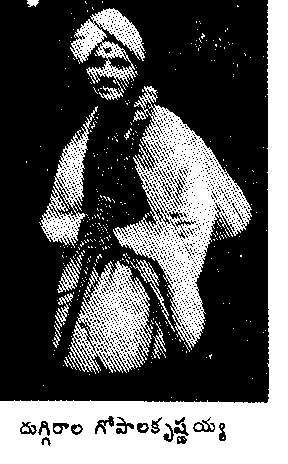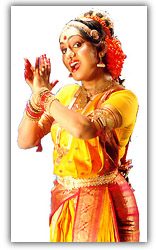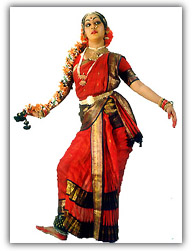|
|
|
|
|
|
|
||
Gopalakrishnayya Duggirala (1889-1928)(The Gem of Andhra)
He was born in Penuganchiprolu village in Krishna district on June 2, 1889 into a Brahmin family. His father was Kodandaraamaiah and mother was Seetamma. He studied in high schools in Gunturu and Bapatla cities. While at school, even at that young age, he founded “Jaateeya Naatyamandali (National Dance Group)” to help develop arts such as drama and music. He went to England for higher studies with the help of his friend Narasimharao Nadimpalli in 1911. After graduating with MA degree from Edinburgh University, he worked with Ananda Kumaraswamy for some time and translated Nandikeswara’s abhinaya darpanamu from Sanskrit into English entitled, “The Mirror of Gesture,” published by Cambridge-Harvard University Press in 1917. After a brief tenure as a lecturer at Rajamandri Training College and Bandaru National College, he jumped headlong into freedom struggle. In 1919, the British government unified Cheerala and Perala municipalities into one municipality. Gopalakrishnayya called for a non-cooperation movement against this action. This movement became one of the most important milestones in the Andhra freedom struggle. He traveled extensively in Andhra, after the Nagpur Congress Convention in 1920, to propagate the aims of the meeting. He was jailed for one year when he disobeyed a ban on speeches in Barampuram. He was very much interested in Telugu folk-arts and toiled for the uplift of these arts. Telugu folk arts include toalubommalaata (puppet show), jamukulakatha, burrakatha, veedhinaatakaalu, saamu gaaradeelu, golla kalaapam, butta bommalu, keelu gurraalu, vaalakaalu, gosangi, guravayyalu, saradhakatha, kinnerakatha, kommu boora, jodu maddela, palle suddulu, toorpu bhagotham, chuttukaamudu, pitchikuntlavaalla katha, sadhana soorulu, palanati veera vidyavanthulu, etc. He founded a journal entitled, “saadhana.” He strove for the spread of libraries in Andhra in a movement called grandhalayodyamamu (library movement). He was very spiritualistic and a Rama worshipper. He formed a volunteer group called ‘Ramadandu,” which was a well-organized, patriotic and spiritual organization. He was awarded the title “Andhra Ratna (Gem of Andhra)’ by the people in 1921 at a meeting in Gunturu. He died at the age of 40 in 1928. |
||
|
Source: "Noorguru Telugu Pramukhulu,"
Narasimharao, M.L.
|
||
|
Om! Asatoma Sadgamaya,
Tamasoma Jyotirgamaya, Mrityorma Amritamgamaya, Om Shantih, Shantih,
Shantih!
Back to Vepachedu Home Page
|


